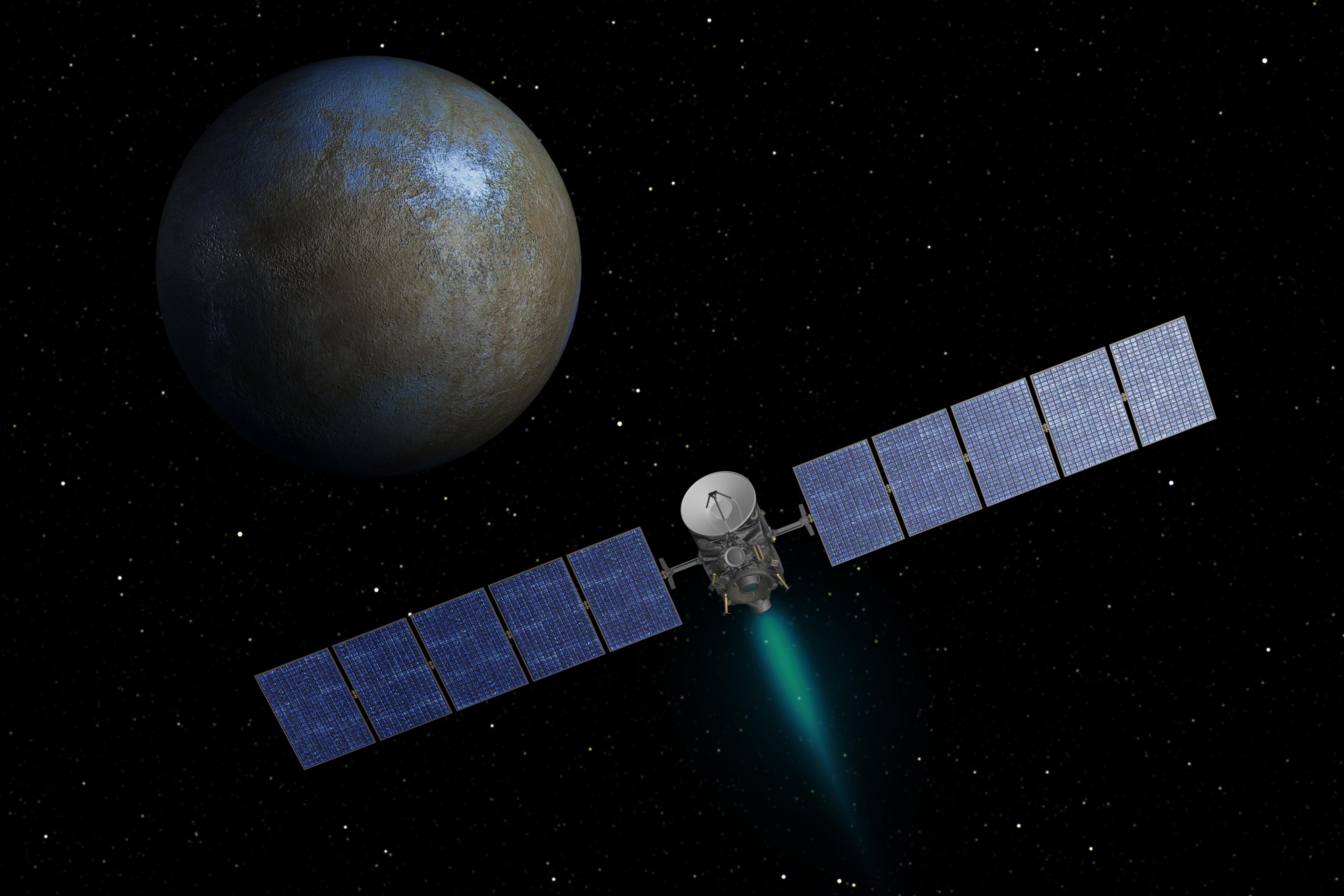
NASA's Dawn spacecraft has begun approaching Ceres ahead of a historic March arrival at the mysterious dwarf planet.
Dawn has officially entered the Ceres approach phase, after recently emerging from behind the sun relative to Earth and thus coming back into reliable communication range. The probe is now about 400,000 miles (640,000 kilometers) from Ceres and is cruising toward the 590-mile-wide (950 km) object at 450 mph (725 km/h), NASA officials said.
Dawn should enter orbit around Ceres — the largest object in the main asteroid belt between Mars and Jupiter — on March 6, 2015. When that happens, the spacecraft will become the first ever to orbit two different unexplored solar system bodies. (Dawn circled the protoplanet Vesta, the asteroid belt's second-largest object, from July 2011 through September 2012.) [Photos: Asteroid Vesta and NASA's Dawn Spacecraft]
Mission team members, and space scientists around the world, are eager to see Ceres up close.
"Ceres is almost a complete mystery to us," Dawn principal investigator Christopher Russell, of UCLA, said in a statement. "Ceres, unlike Vesta, has no meteorites linked to it to help reveal its secrets. All we can predict with confidence is that we will be surprised."
While Ceres and Vesta reside in the same general neighborhood, they appear to be quite different from each other. For example, the 325-mile-wide (525 km) Vesta is thought to be a dry body, while Ceres possesses an icy mantle and might even harbor a subsurface ocean of liquid water. (Indeed, Ceres might be capable of supporting life as we know it, some researchers say.)
This difference may result from slightly different formation times. Scientists think Vesta came together a bit earlier than Ceres did, when radioactive material was more abundant in the solar system. Vesta's interior therefore likely incorporated more radioactive stuff, which generated more heat and drove away more water, NASA officials said.
Get the Space.com Newsletter
Breaking space news, the latest updates on rocket launches, skywatching events and more!
The $466 million Dawn mission does not rely on tradititional chemical thrusters but rather employs a super-efficient ion propulsion system, in which ionized xenon gas is accelerated out the back of the spacecraft to generate thrust.
"Orbiting both Vesta and Ceres would be truly impossible with conventional propulsion. Thanks to ion propulsion, we're about to make history as the first spaceship ever to orbit two unexplored alien worlds," Dawn chief engineer and mission director Marc Rayman, of NASA's Jet Propulsion Laboratory in Pasadena, California, said in the same statement.
While March 6 marks the beginning of orbital operations at Ceres, another milestone will come by the end of January: At that point, Dawn's photos will be the best ever captured of the dwarf planet, NASA officials said.
Dawn launched in 2007 on a mission to learn more about the solar system's early days, and the planet-formation process, by studying Vesta and Ceres. The probe's prime mission is scheduled to end in July 2015.
Follow Mike Wall on Twitter @michaeldwall and Google+. Follow us @Spacedotcom, Facebook or Google+. Originally published on Space.com.
Join our Space Forums to keep talking space on the latest missions, night sky and more! And if you have a news tip, correction or comment, let us know at: community@space.com.

Michael Wall is a Senior Space Writer with Space.com and joined the team in 2010. He primarily covers exoplanets, spaceflight and military space, but has been known to dabble in the space art beat. His book about the search for alien life, "Out There," was published on Nov. 13, 2018. Before becoming a science writer, Michael worked as a herpetologist and wildlife biologist. He has a Ph.D. in evolutionary biology from the University of Sydney, Australia, a bachelor's degree from the University of Arizona, and a graduate certificate in science writing from the University of California, Santa Cruz. To find out what his latest project is, you can follow Michael on Twitter.









